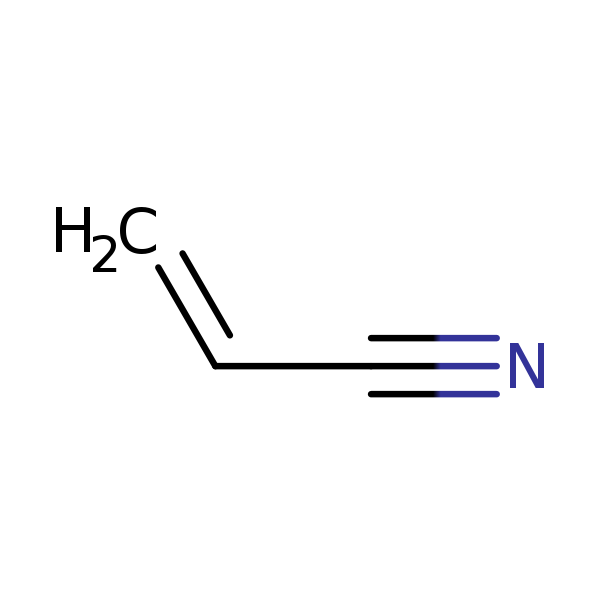Acrylonitrile
CASRN 107-13-1 | DTXSID5020029
- IRIS Summary (PDF) (23 pp, 158.2 KB, about PDF)
- Status: Development of the acrylonitrile (re)assessment has been discontinued.
Health Assessment Document for Acrylonitrile (Final Report, 1983)
On this page:
Alert
Notice - This site contains archived material(s)
Archive disclaimer
Archived files are provided for reference purposes only.
The file was current when produced, but is no longer maintained and may now be outdated.
Persons with disabilities having difficulty accessing archived files may contact the IRIS Webmaster for assistance.
Please use the contact us form if you need additional support.
Overview
Acute acrylonitrile intoxication in humans, like many volatile organic compounds, results in irritation of the eyes and nose, weakness, labored breathing, dizziness, impaired judgement, cyanosis, nausea, and convulsions. Unlike many of these other organics, acrylonitrile causes severe burns upon contact with the liquid chemical. Some significant functional disorders of the liver and kidney are observed under subchronic exposure conditions; while chronic exposure results in signs (unthrifty appearance, weight loss and early death) that may be related to the low food and water consumption resulting from the unpleasant taste of acrylonitrile in water. Pathological changes in rats believed to be treatment related include hyperplasia and hyperkeratosis of the squamous cells in the brain and mammary gland hyperplasia in females. The present data base from human and toxicologic studies provides enough evidence such that the International Agency for Research on Cancer (IARC) has characterized acrylonitrile as an animal carcinogen and a likely human carcinogen. Unlike the animal bioassay data, the human data base does not unequivocally demonstrate a causal association.Additional Information
See also PB83-129593.Download(s)
This document has been reviewed in accordance with U.S. Environmental Protection Agency policy and approved for publication. Mention of trade names or commercial products does not constitute endorsement or recommendation for use.
If you have a disability and the format of any material on our web pages interferes with your ability to access the information, please reach out to us using the Contact Us about IRIS form for assistance. To enable us to respond in a manner most helpful to you, please indicate the nature of the accessibility problem, the web address of the requested material, your preferred format in which you want to receive the material (electronic format (ASCII, etc.), standard print, large print, etc.), and your contact information.
Related Links
Critical Effect Systems
Tumor Sites
Chemical Structure for
Acrylonitrile

Synonyms
- Acritet
- Acrylnitril
- Acrylon
- Acrylonitrile
- Acrylonitrile monomer
- Akrylonitryl
- Carbacryl
- Cianuro di vinile
- Cyanoethylene
- Cyanure de vinyle
- ENT 54
- Fumigrain
- Miller's Fumigrain
- Nitrile acrilico
- Nitrile acrylique
- Propenenitrile
- RCRA Waste Number u009
- TL 314
- UN 1093
- VCN
- Ventox
- Vinyl cyanide
- 107-13-1
- 2-Propenenitrile




